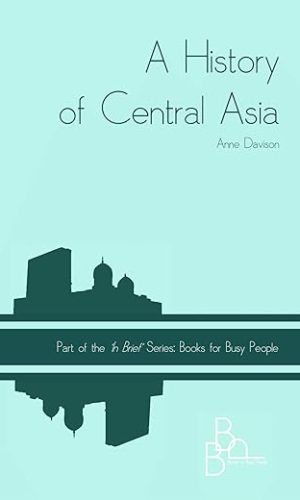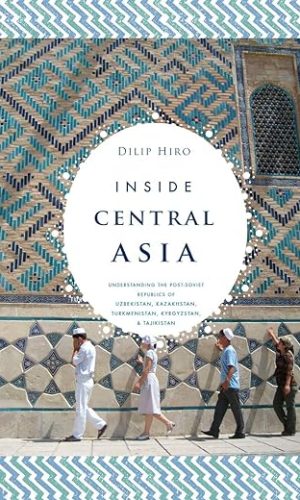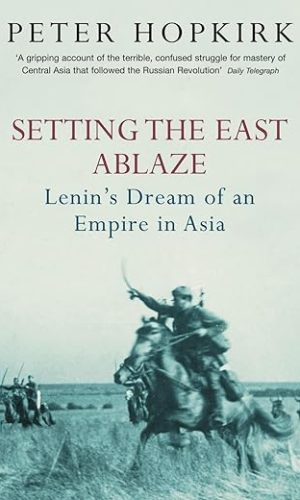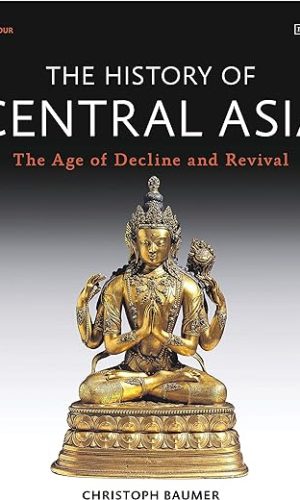Central Asia
-
A History of Central Asia (‘In Brief’ Books for Busy People)
For most of its history, Central Asia has been ruled by powerful dynasties, fallen under the vassalage of neighbouring empires or been invaded by foreign powers. Only the more remote, inaccessible tribal areas have maintained a degree of independence. However, since the fall of the Soviet Union in 1991, five distinct independent nation states have emerged that are now generally referred to as ‘Central Asia’, namely Uzbekistan, Tajikistan, Turkmenistan, Kazakhstan and Kyrgyzstan.
Regardless of who has been in power over the centuries, the one constant has been the significance of the land bridge that straddles the region connecting Europe and Asia, otherwise known as the Silk Road, or Roads. In ancient times, silks and spices travelled westwards, while furs, wools and precious metals took an eastward route. Consequently, those who controlled the trade-route accrued immense wealth and built great cities such as ancient Samarkand, Bukhara and Khiva.
The ancient Silk Road is now being revitalised. But rather than silks and spices, today the commodities being transported include natural gas, oil, minerals and communication systems.
This book tells the story of conquest and invasion, of empire building and colonialism. The earlier chapters include the great Persian/Iranian Empires, such as the Achaemenids, the Sassanids and the Safavids, as well as the exploits of Alexander the Great. Further chapters cover the Turkic migrations, arrival of Islam and the invasion of the Mongols. The final chapters tell of the conflict between the imperial powers of Russia and Britain, which was an event known as the Great Game. The 20th Century period of Soviet rule in Central Asia marks the final chapter and the book concludes with an Epilogue that brings the reader up to current events.
As with other books in the ‘In Brief’ series, this book is aimed at the general reader who wants to understand a particular historical topic but does not have the time or inclination to read a heavy academic tome. With this mind, footnotes have been omitted.While there will inevitably be gaps in a book of this size, the intention is to cover the most significant events that moulded Central Asia’s history. Should the reader be inspired to further reading on the subject, a small selection of the main works that have been consulted is provided at the end.
Read more
£5.10 -
Asia: A Concise History
From one of the world’s leading historians?a comprehensive narrative of the 3,000 years that have formed Asia’s people, culture, and global destinyTracing its origins in Mesopotamia to its modern role on the global geopolitical stage, historian Arthur Cotterell offers a compelling, lively, and readable account of one of the most culturally diverse, and often misunderstood, parts of the world. Beginning with the emergence of the world’s earliest civilization in 3000 BC, Asia: A Concise History provides a fascinating look at the global convulsions?like the rise and fall of Assyria and Persia, the medieval states that flourished after the advent of Islam, and the modern transformations triggered by the lightning conquests of imperial Japan?that have shaped the continent.
- Covers the great events and figures of Asian history, along with a look at the monumental remains that bear witness to those times: the ziggurats of Iraq, the Taj Mahal, the Great Wall of China, the temple of Angkor Wat
- Includes fascinating slices of history, including funeral arrangements for Qin Shi Huangdi in 210 BC; an extract from Lord Macartney’s journal of his 1793 diplomatic mission to the Qing emperor Qian Long; and Toyotomi Hideyoshi’s edict of 1587 banning firearms in Japan
- Features boxed inserts of special interest?like a Babylonian recipe for lamb stew circa 1500 BC
- Contains over 100 illustrations, maps, and photos
- Other books by Cotterell: The Minoan World, The First Emperor of China, The Encyclopedia of Mythology, and Chariot
Destined to become a reference staple for history buffs and students of Asian history, Asia: A Concise History offers readers a breathtaking narrative and wealth of detail that make the formative periods, key events, and personalities from this once remote part of the world come alive.
Read more
£18.00Asia: A Concise History
£18.00 -
Inside Central Asia: A Political and Cultural History of Uzbekistan, Turkmenistan, Kazakhstan, Kergtzstan, Tajikstan, Turkey and Iran
The former Soviet republics of Central Asia comprise a sprawling, politically pivotal, densely populated, and richly cultured area of the world that is nonetheless poorly represented in libraries and mainstream media. Since their political incorporation in Stalin’s Soviet era, these countries have gone through a flash of political and economical evolution. But despite these rapid changes, the growth of oil wealth and U.S. jockeying, and the opening of the region to tourists and businessmen, the spirit of Central Asia has remained untouched at its core. In this comprehensive new treatment, renowned political writer and historian Dilip Hiro offers us a narrative that places the modern politics, peoples, and cultural background of this region firmly into the context of current international focus. Given the strategic location of Central Asia, its predominantly Muslim population, and its hydrocarbon and other valuable resources, it comes as no surprise that the five Central Asian republics are emerging in the twenty-first century as one of the most potentially influential-and coveted-patches of the globe.Read more
£19.00 -
Setting the East Ablaze: Lenin’s Dream of an Empire in Asia
‘Let us turn our faces towards Asia’, exhorted Lenin when the long-awaited revolution in Europe failed to materialize. ‘The East will help us conquer the West.’ Peter Hopkirk’s book tells for the first time the story of the Bolshevik attempt to set the East ablaze with the heady new gospel of Marxism. Lenin’s dream was to liberate the whole of Asia, but his starting point was British India. A shadowy undeclared war followed. Among the players in this new Great Game were British spies, Communist revolutionaries, Muslim visionaries and Chinese warlords – as well as a White Russian baron who roasted his Bolshevik captives alive. Here is an extraordinary tale of intrigue and treachery, barbarism and civil war, whose violent repercussions continue to be felt in Central Asia today.Read more
£9.60£10.40 -
The History of Central Asia: The Age of Decline and Revival (Volume 4)
For more than a hundred years, Central Asia was the heartland of the mightiest military power on the planet. But after the fragmentation of the all-conquering Mongol polity, the region began a steep decline which rendered this former domain of horse lords peripheral to world affairs. The process of deterioration reached its nadir in the second half of the nineteenth century, when the former territories and sweeping steppes of the great khans were overrun by Tsarist Russia. In the concluding volume of his acclaimed Central Asia quartet, Christoph Baumer shows how China in the east, and Russia in the northwest, succeeded in throwing off the Mongol yoke to become the masters of their own previous rulers. He suggests that, as traditional transcontinental trade routes declined in importance, it was the `Great Game’ – or cold war between Imperial Russia and Great Britain – which finally brought Central Asia back into play as a region of strategic importance. This epic history concludes with an assessment of the transition to modern independence of the Central Asian states and their struggle to contain radical Islamism.Read more
£28.50





